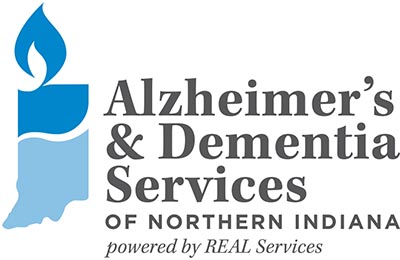About Alzheimer’s Disease
What is Alzheimer’s Disease?
- NOT a normal part of aging (senility, hardening of the arteries, or organic brain syndrome were terms used years ago to describe what we now call dementia)
- The most common form of dementia
- A progressive, degenerative neurological illness
- Marked by gradual onset
- Destroys brain cells, results in structural and chemical changes.
- Brain cells are not replaced.
- Characterized by plaques and tangles in the brain
- Caused still undetermined
- Course of disease can take 2-20 or more years; average 8-10 years
Alzheimer’s Disease is NOT…
- A mental illness
- A normal part of aging
- Senility
- Contagious
- A result of using aluminum pans or foil
- A result of Lyme or any other disease
- Preventable
- Reversible
- A “funny” disease
- A race-oriented disease
- Only for older adults
Alzheimer’s Disease IS…
- A medical illness
- The most common type of dementia
- A progressive, degenerative and neurological illness
- Characterized by chemical and structural changes in the brain
- Affecting approximately 4.5 million Americans
- Affecting about 10.3% of people, of all races, and gender, 65 years of age or older
- Also affecting persons in their 30s and 40s
- The fourth leading cause of death among adults
- Diagnosed 100% only through brain autopsy after death
A person with Alzheimer’s Disease can…
- Perform simple tasks
- Enjoy previous hobbies, if somewhat modified
- Enjoy favorite foods, music and activities
- Show love and affection
- Experience emotions such as sadness, fear, loneliness and anger
- Accuse others of false actions and behaviors
- Act suspiciously toward other people
- Lose or hide items
- Curse, strike out, cry, spit or act inappropriately
- Respond to voice tone and eye contact
- Experience pain or discomfort from other conditions
- Respond to supportive, predictable environment
A person with Alzheimer’s Disease cannot…
- Communicate clearly
- Understand fragmented or abstract thoughts
- Understand sarcasm or humor
- Understand open-ended questions
- Express him/herself coherently
- Cooperate consistently
- Respond to reason
- Learn new things
- Make decisions
- Drive, as the disease progresses
- Recognize familiar objects or people
- Understand what an object is
- Complete a task without directions
- Comprehend complex orders
- Maintain past skills
- Control all actions
- Participate in conversations in the later stages
Warning signs of Alzheimer’s Disease
- Increasing incidences of short-term memory loss that effects everyday living of job
- Difficulty doing familiar things such as using an appliance or tying a tie
- Forgetting common words, using the wrong word, or having problems naming a common object, such as a pencil
- Putting things in strange places or frequently losing or misplacing things
- Getting lost or disoriented easily, even in familiar places; disorientation to time or place
- Problems with complicated tasks, or with abstract thinking (e.g., balancing a checkbook)
- Problems with judgment (doing things that don’t seem to make sense)
- Major change in personality (e.g., confused, afraid, suspicious) or sudden changes in mood or behavior
- Losing interest in doing things (or losing interest quickly if not encouraged)
How Alzheimer’s Disease Affects the Brain
The disease is characterized by the gradual spread of sticky plaques and clumps of tangled fibers that disrupt the delicate organization of nerve cells in the brain. As brain cells stop communicating with one another, they atrophy – causing memory and reasoning to fade.
Tangles and plaques first develop in the entorhinal cortex, a memory-processing center essential for making new memories and retrieving old ones.
Over time, they appear higher, invading the hippocampus, the part of the brain that forms complex memories of events or objects.
Finally the tangles and plaques reach the top of the brain, or neocortex, the “executive” region that sorts through stimuli and orchestrates all behavior.
A brain ravaged by Alzheimer’s shrinks in size and weight as the disease destroys neural tissue. The once tightly packed ruts and grooves on the surface of a healthy cerebral cortex become visibly pitted with gaps and crevices.
